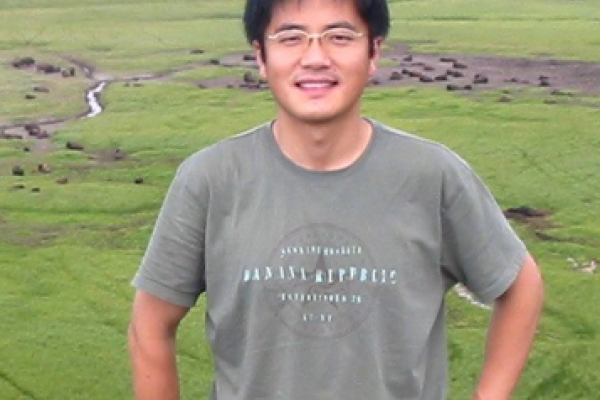
January 9, 2017
3:00PM - 4:00PM
4138 Physics Research Building
Add to Calendar
2017-01-09 16:00:00
2017-01-09 17:00:00
High Energy Physics Seminar - Yang Bai (University of Wisconsin, Madison) "Hydrogen Axion Star"
As a potential cold dark matter candidate, the QCD axion may form Bose-Einstein condensation or axion stars with a mass around 10^-11 solar mass. The ordinary baryonic matter can be gravitationally attracted towards the axion star and become axion-star-bounded hydrogen cloud, possibly in the metallic hydrogen liquid state. Because of the high particle number densities for both the axion star and the hydrogen could, the feeble interaction between axion and hydrogen can still generate enough internal powers, around 10^13 W for an axion mass of 5 meV, to make this new astrophysical object bright. The current and future telescope has sensitivity to discover this metallic-hydrogen-clouded axion stars via its black-body radiations.
4138 Physics Research Building
OSU ASC Drupal 8
ascwebservices@osu.edu
America/New_York
public
Date Range
Add to Calendar
2017-01-09 15:00:00
2017-01-09 16:00:00
High Energy Physics Seminar - Yang Bai (University of Wisconsin, Madison) "Hydrogen Axion Star"
As a potential cold dark matter candidate, the QCD axion may form Bose-Einstein condensation or axion stars with a mass around 10^-11 solar mass. The ordinary baryonic matter can be gravitationally attracted towards the axion star and become axion-star-bounded hydrogen cloud, possibly in the metallic hydrogen liquid state. Because of the high particle number densities for both the axion star and the hydrogen could, the feeble interaction between axion and hydrogen can still generate enough internal powers, around 10^13 W for an axion mass of 5 meV, to make this new astrophysical object bright. The current and future telescope has sensitivity to discover this metallic-hydrogen-clouded axion stars via its black-body radiations.
4138 Physics Research Building
Department of Physics
physics@osu.edu
America/New_York
public
As a potential cold dark matter candidate, the QCD axion may form Bose-Einstein condensation or axion stars with a mass around 10^-11 solar mass. The ordinary baryonic matter can be gravitationally attracted towards the axion star and become axion-star-bounded hydrogen cloud, possibly in the metallic hydrogen liquid state. Because of the high particle number densities for both the axion star and the hydrogen could, the feeble interaction between axion and hydrogen can still generate enough internal powers, around 10^13 W for an axion mass of 5 meV, to make this new astrophysical object bright. The current and future telescope has sensitivity to discover this metallic-hydrogen-clouded axion stars via its black-body radiations.
